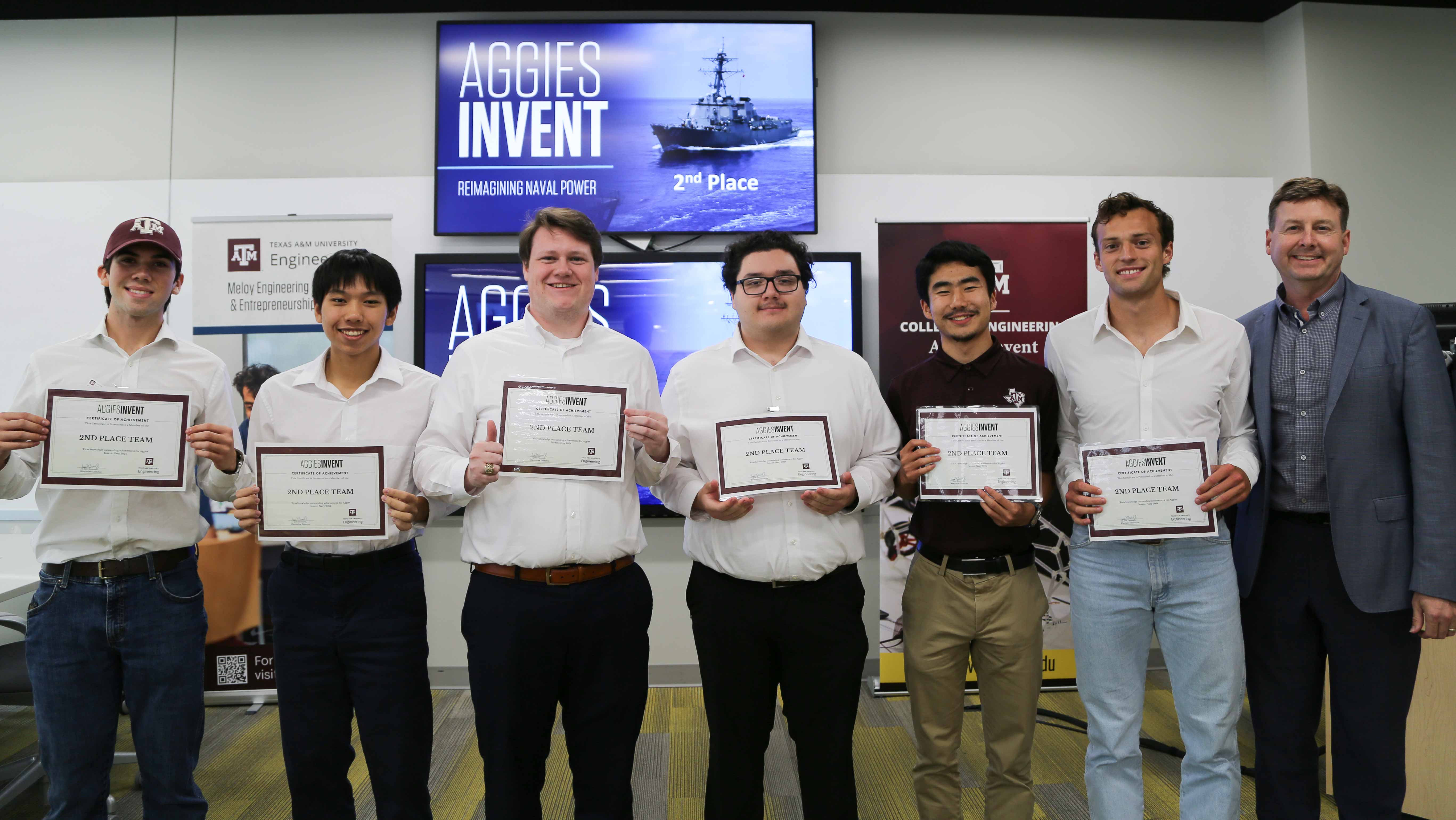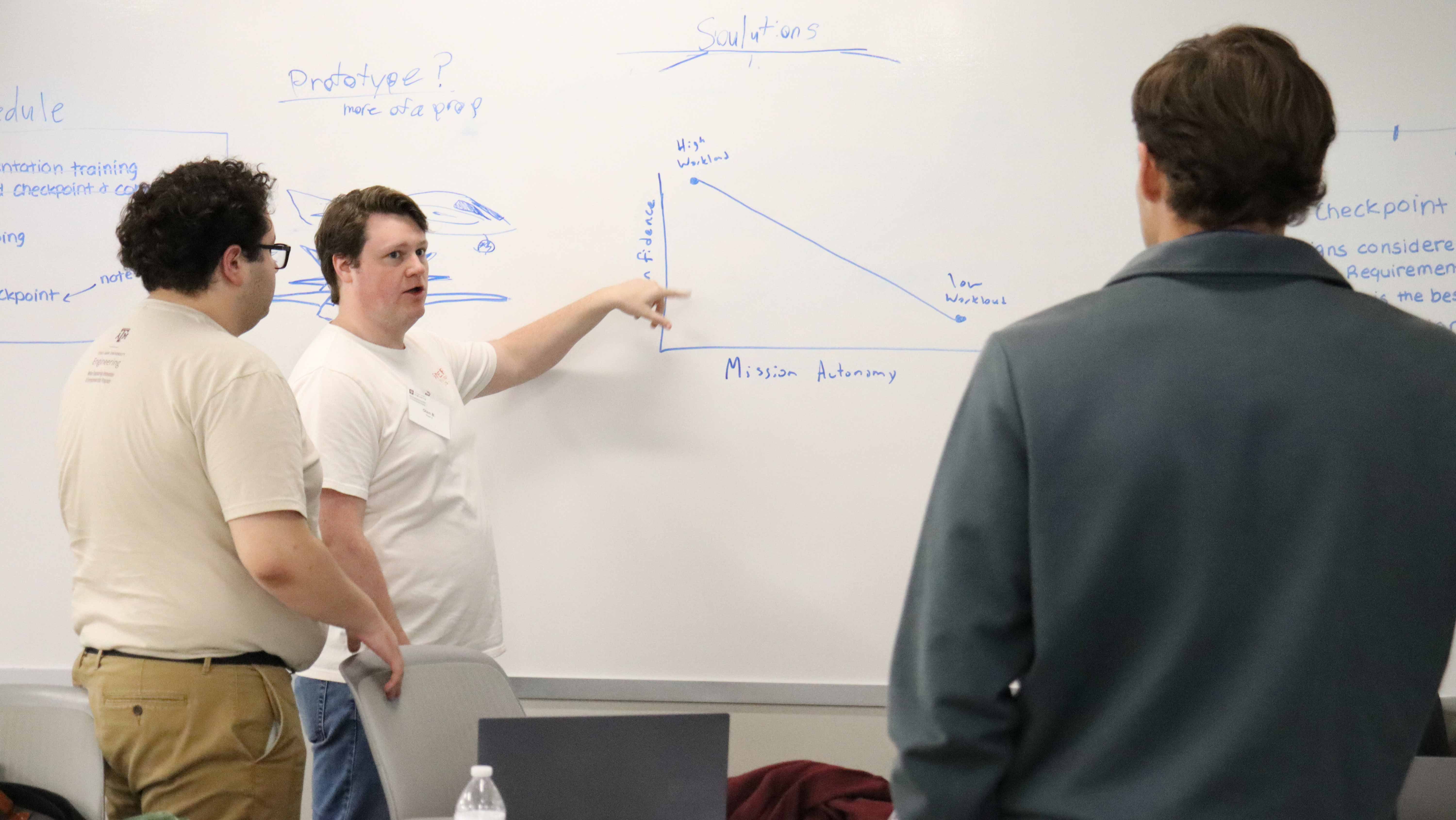
As industries increasingly embrace automation, the U.S. Navy is accelerating efforts to integrate advanced technologies into its operations. Yet, with this rapid progress comes a new wave of concerns: How will autonomous systems perform in the high-stakes environment of real-time combat?
Aggies Invent: Reimagining Naval Power aimed to tackle these concerns head-on.
Through partnerships with defense organizations, Aggies Invent offers engineering students a unique opportunity to be involved in developing cutting-edge military innovations, helping them explore viable career paths while working on real-world engineering challenges.
In just one weekend, six student teams collaborated to solve pressing issues facing naval operations. Sponsored by the Office of Naval Research, the event presented students with problem statements ranging from enhancing communication in man-overboard scenarios to designing innovative hybrid propulsion systems for UAVs.
While participants have 48 hours to develop solutions, craft working prototypes and prepare presentations, the most challenging — and essential — part of the process is fully understanding the problem. Using human-centered design strategies, students conducted customer discovery interviews with target audiences to gain insight into the issues at hand.
In interviews with current personnel, one team uncovered a particularly complex and personal issue — a lack of trust in emerging autonomous technologies.
In the Navy, trust is paramount; pilots rely on shared training, experience and relationships to build confidence in one another. The challenge is to create autonomous aircraft that combine precise algorithms and controls with rigorous testing to ensure reliability in the field.
“What we found from our interviews with fighter pilots is that trust is born of repetition and reliability — they have an ingrained culture of sticking to what works.” explained Olen Brown, a senior in computer engineering and member of second-place team Hermes.

“In speaking with the Air Force Chief Test Pilot for AI Testing and Operations, we gained valuable insight into the reality that whatever we came up with, these men and women would have to trust it with their lives.”
With over two trillion dollars invested by the Department of Defense to modernize the F-35 fighter jet, the team leveraged these existing capabilities. Hermes built upon current technology by implementing a software system that enables pilots to issue voice commands to the UAV that are translated into machine-readable code. In response, the UAV provides verbal confirmation, using the same language and code familiar to airmen. Recognizing that a lack of trust often stems from limited insight into a UAV’s decision-making processes, Hermes — aptly named after the Greek god of communication — delivers efficient, predictable two-way feedback in the air.
“When developing our solution of Large Language Model-based control over an autonomous aircraft, we certainly saw the relative cost of a software solution over building out a whole new air frame as a selling point.” noted Brown. “I learned that the cornerstone of a high-quality product is its acceptance to rely on existing technologies.”
The team presented their solution to judges from the Office of Naval Research using an interactive prototype to showcase the software's capabilities. Through a cardboard cut-out helmet and large screen, they demonstrated how easily pilots could issue commands to autonomous vehicles and anticipate their responses. With built-in safeguards to prevent enemy interference, the Hermes system highlighted an innovative approach to secure, user-friendly autonomous technology intentionally designed for pilot trust and operational reliability.
Reflecting on the experience, Brown noted that understanding the problem deeply made finding a solution that much more rewarding.
“It's one thing to brainstorm, prototype and pitch an idea in 48 hours, but it’s another to have people that are experts in this technology find our solution viable in the real world.”
In the event’s closing remarks, Chris Finberg, associate professor of practice for the Entrepreneurship Program, underscored the value of intensive projects like Aggies Invent in shaping students' future success as engineers.
“Remember your time here,” he said. “When recruiters ask you to share a story, you’ll have one about working under pressure to develop real-world solutions as part of a team. That’s what will set you apart from the other 20,000 engineers at Texas A&M University.”